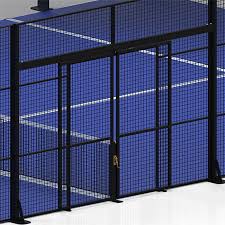

The Evolution and Innovation in Paddle Tennis Racquet Manufacturing
Paddle tennis, a sport that fuses elements of tennis and squash, has gained immense popularity in recent years. This rise in interest has led to the emergence of numerous paddle tennis racquet factories, each vying to produce high-quality equipment to cater to both amateur and professional players. This article delves into the industrial processes, materials, and innovations involved in paddle tennis racquet manufacturing.
The Importance of Material Selection
At the heart of any paddle tennis racquet is the material selection, which directly influences performance, durability, and comfort. The primary materials used in contemporary paddle tennis racquets include carbon fiber, fiberglass, and foam.
Carbon fiber is favored for its lightweight yet robust characteristics, offering players improved maneuverability without sacrificing strength. This material allows for a more significant power transfer during ball strikes, enabling players to execute powerful shots with greater ease.
Fiberglass is another common choice, typically used to produce more budget-friendly racquets. It offers good durability and flexibility, making it an excellent option for beginners who are still developing their skills. Fiberglass racquets provide decent control and comfort, ideal for players who favor a softer feel on impact.
Additionally, the core of the racquet, often made of EVA foam or polyethylene, plays a critical role in absorbing shock and enhancing ball control. Manufacturers meticulously design the core's density and structure to optimize performance across various playing styles.
Advanced Manufacturing Techniques
Paddle tennis racquet factories employ state-of-the-art technologies and manufacturing techniques to ensure precision and quality. One of the most significant advancements in recent years has been the introduction of computer-aided design (CAD) systems. These systems allow engineers to create intricate designs and simulate the racquet's performance under different conditions, ensuring that the final product meets the highest standards.

Another innovative technique is the use of automated cutting machines that produce precise racquet shapes from carbon fiber and fiberglass sheets
. This automation not only speeds up the production process but also reduces waste, making it a more environmentally friendly option.The curing process is equally critical. After the racquet is constructed, it undergoes a curing phase where heat treatment solidifies the materials. This step is vital for ensuring the racquet’s longevity and resilience, allowing it to withstand the rigors of competitive play.
Customization and Personalization
As paddle tennis grows more popular, there is a growing demand for customized racquets. Many factories now offer personalized options, allowing players to select their preferred balance, weight, and grip size. Some companies even provide the opportunity for players to incorporate their designs or colors, making each racquet unique.
This trend toward customization enables players to find a racquet that best fits their playing style and physical capabilities. Custom racquets can significantly enhance a player’s performance, as the right balance and weight distribution can lead to improved stroke mechanics and reduced risk of injury.
Sustainable Practices in Production
With the increasing awareness of environmental issues, many paddle tennis racquet manufacturers are adopting sustainable practices. Some factories are beginning to source materials from renewable resources and implementing recycling programs to minimize waste. Innovations in biodegradable materials and eco-friendly resins are also making their way into the production process, reflecting a broader trend within the sporting goods industry towards sustainability.
Conclusion
The paddle tennis racquet manufacturing industry is continuously evolving, driven by innovations in materials, technology, and customization. As the sport continues to grow, these factories play a crucial role in enhancing players' experiences by providing high-quality, tailored equipment that meets their diverse needs. The blend of tradition and innovation in manufacturing processes not only allows for superior racquet performance but also promotes sustainability, shaping the future of paddle tennis for generations to come. Whether you are a seasoned player or just starting, understanding the intricacies of paddle tennis racquet production can enrich your appreciation of this exciting sport.
Premium Rubber Composite Floor for Ultimate Durability & Safety Rubber Floor Mat Solutions
High-Quality Industrial Flooring Solutions for Factories Expert Installation & Cost Saving
Premium Rubber Brick Flooring Durable & Slip-Resistant
Durable & Non-Slip Rubber Flooring for Gym, Garage, Home
Durable Industrial Flooring Solutions China Padel Install
Durable Rubber Floor Slip-Resistant & Easy Clean